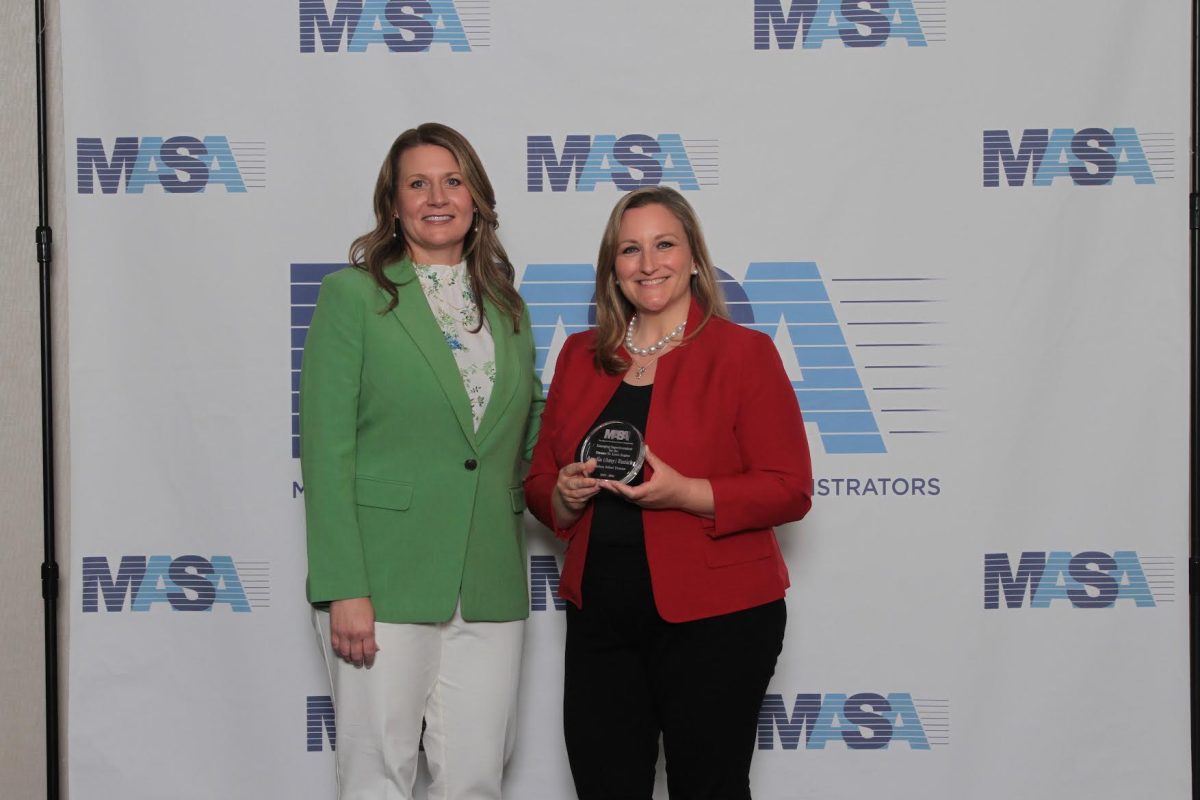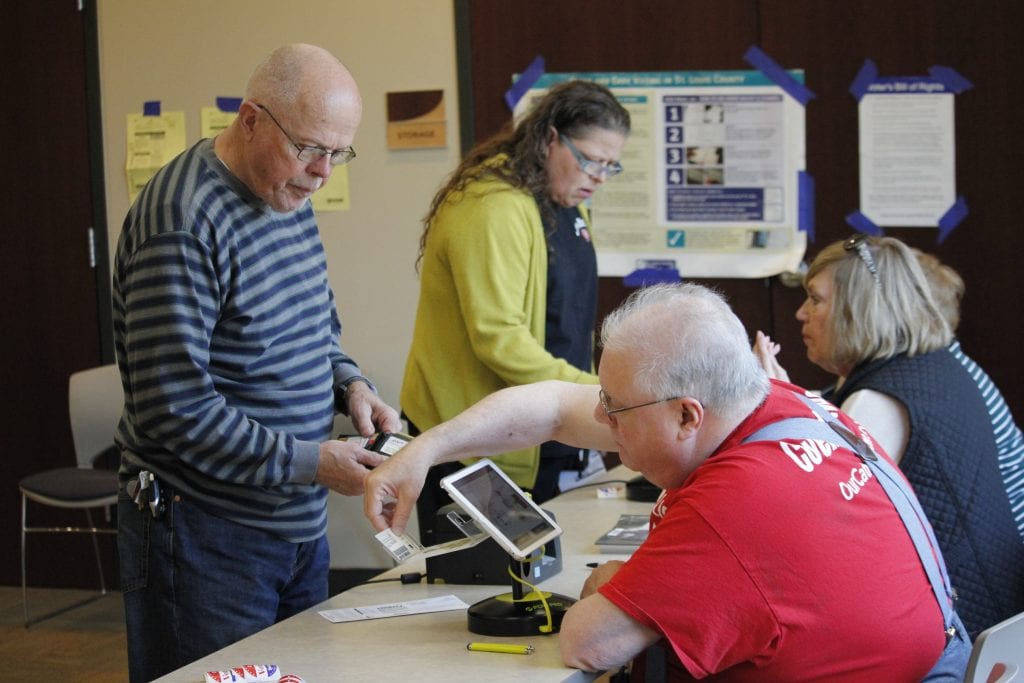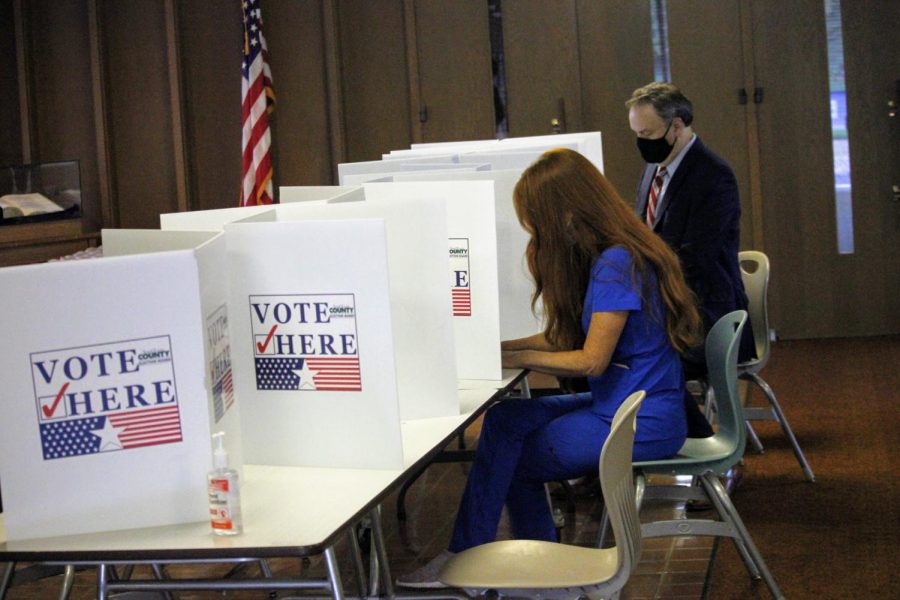The Mehlville Board of Education again discussed the possibility of putting a ballot measure before voters at its meeting Aug. 18.
The ballot measure could be in the form of a tax levy, bond, or both and could be asked as early as next April, or sometime within the next six years. The idea was first floated during a strategic plan update earlier this summer when Superintendent Chris Gaines said the district was facing a series of financial challenges. At the board meeting in August, Gaines reiterated those challenges to the board — stagnation in the state funding formula, increasing costs of goods, increasing construction costs and competitive wages — as well as highlighting that the Elementary and Secondary School Emergency Relief money the district was receiving from the federal government was set to expire in 2023-2024. The ESSER money is being used to fund 34 learning interventions, after-school supports and other learning recovery programs, as well HVAC upgrades for better air quality and some technology supports.
“Over the next four to six years, there are a lot of things we need to think about in terms of do we ask the community to support these pieces or not,” Gaines said Aug. 18.
The last ballot measure to pass in the district for operations was Proposition R in 2015, a 49-cent increase to the district’s property tax rate. Historically operations levies in the district have done poorly. In data shown by Gaines going back to the first operations ballot measure asked in 1968, 19 operations measures failed while only seven have passed. Bond measures for building improvements have typically done better.
“When you think about things, when you think about the ESSER budget, when you think about the number of interventionists and after-school supports and all the other pieces that we have, it’s roughly $4.6 million. If we take out the HVAC piece, we’re down to about $3.6 million. So … roughly … it’s going to take 17 cents to generate what it costs to replace those supports. It does not account for increased costs for those things over time,” Gaines said. “That still leaves that notion of competitive wages.”
The district is nearly $2,000 below average in its starting salary for teachers compared to comparative districts at $41,500. In fiscal year 2022, Lindbergh’s starting salary was $43,695 and Hancock Place is $46,000.
There are several options on when and how to ask voters for another ballot measure. If the board wants to keep the positions funded through ESSER and possibly address competitive wages, it would need to ask voters for a tax levy in either 2022-2023 or 2023-2024. A levy for just wages could be asked in the same years. The district could end Proposition A early in 2023-2024 — the 2016 bond that raised the district capital projects fund by 4 cents — and ask for another facility bond measure. Prop A could be extended without an increase in 2024-2025 or 2025-2026.
The earliest the district could ask for anything would be the Nov. 8 ballot, which would require a board decision by Aug. 30.
“In order to put something on the ballot in November, basically we would have 12 days to make a decision. I don’t recommend that. If we wanted to look at April of ‘23, the board would have to make a decision before Jan. 24,” Gaines said. “So if –— capital if, bold, underline, all that stuff — if there was to be consideration of putting something on the April ballot, what information does the board need from the administration between now and January to make a decision whether to put something on the ballot or not?”
Director Scott Huegerich said he would like to see the “return on investment” on the interventionists before making any kind of decisions to keep them beyond 2023-2024.
“I would love to keep the interventionists, however, if our enrollment hasn’t changed and we have more teachers in the buildings, then the only way you can measure ROI is by academics improving somehow,” Huegerich said. “I would personally love to see something that would show a tangible increase in academics, that way we can see the ROI that keeping the interventionists would bring.”
Director Jean Pretto said her driving force was competitive salaries. Mehlville’s turnover rate increased this year to 8.4 percent, now matching the national average. Before that, Gaines said it usually floated around the 6-percent range.
“My main concern … is competitive salary. We’re losing teachers … and if we don’t have good teachers, we have nothing. We can forget about good grades if we don’t have teachers. If we keep stifling wages on our classified employees, we’re going to have the same problem there,” Pretto said.
“We are competing for labor like I’ve never seen … We want competitive wages across all classes of employees, not just one group. … We continue to be understaffed in terms of facilities … we’ve also lost some folks in positions that are kind of unique positions and hard to find replacements for those,” Gaines added.
Huegerich said that he was on board with being competitive with salaries “100 percent” but that he wasn’t sure of the continued need for the ESSER interventionists beyond 2024 without seeing some measure of efficacy, pointing out that the district could be more aggressive with its pay scale at the expense of not continuing the interventionists.
“If we do ask for a ballot issue, it’s going to be X amount of cents or whatever, well we might decide we want to be more aggressive with wages for our existing staff at the expense of not keeping the interventionists. That might be a better strategy,” Huegerich said.
The board has repeatedly discussed setting salary targets for both certified and classified employees in budget discussions and Board President Peggy Hassler said she would like to see some of those targets before moving forward.
“I’d like to see … what that number looks like and how many cents we would need to bring salary targets throughout our entire system … The exact numbers it would take to be competitive,” Hassler said. “You already stated it would be about $3.6 million to replace the ESSER funds … so we know that number loosely. Data, data on all the other targets … I really would like to see some kind of survey to the community to see where we can push, how much we can push there and what we think can be approved.”
Gaines said he would bring some of that information and data before the board over the course of the next few months for their review.




























